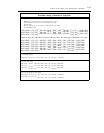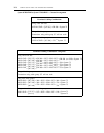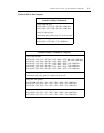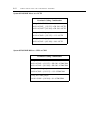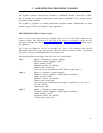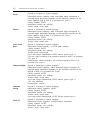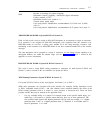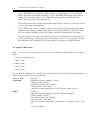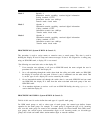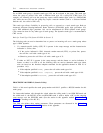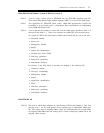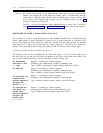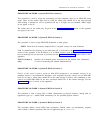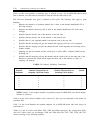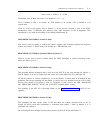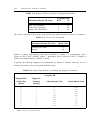
ADMINISTRATIVE PROCEDURE SUMMARY
C-5
Mode 2
Mode 3
Mode 0
Opcode: 4
Information transfer capability: restricted digital information
Coding standard: CCITT
Information transfer rate: 64K-bps
Transfer mode: circuit mode
Opcode: 4
Information transfer capability: restricted digital information
Coding standard: CCITT
Information transfer rate: 64K-bps
Transfer mode: circuit mode
Opcode: 4
Information transfer capability: restricted digital information
Coding standard: CCITT
Information transfer rate: 64K-bps
Transfer mode: circuit mode
PROCEDURE 012 (System 85 R2V4 & Generic 2)
This procedure is used to assign names to extension users or trunk groups. This data is used in
building the Display IE used in setup and connect messages. If data is not assigned for a calling party
using an ISDN-PRI trunk, a display IE is not created.
The following are some basic rules on the display IE:
1.
2.
3.
4.
If an extension user originates a call over an ISDN-PRI trunk, the name assigned the user in
procedure 012 is used for the Display IE.
On a call tandeming through the switch where both the calling and called trunks are ISDN-PRI,
the display IE received over one trunk (if there is one) is tandemed over the other trunk. That
is, on this type of call a display IE is never created by the switch.
On an interworked tandem call through the switch (that is, one trunk ISDN-PRI and one trunk
not ISDN-PRI), the display IE is built from the name associated with trunk group of the non-
ISDN-PRI trunk.
If an attendant originates or receives a call over an ISDN-PRI facility, the string operator is
used to build the display IE.
PROCEDURE 100 WORD 1 (System 85 R2V4 & Generic 2)
Field 6 of this word is used to define the trunk type of a specific trunk group.
For ISDN trunk groups as well as other types of trunk groups, the entered type defines feature
operation for the trunk group. For example, if a trunk group is assigned the type of 19, incoming
calls over this trunk group are routed to the attendant console. On Direct Inward Dial (DID) trunk-
type groups, the switch expects station-number digits on all incoming trunks; on tie-trunk-type
groups, the switch can handle either station-number digits or network numbers.



